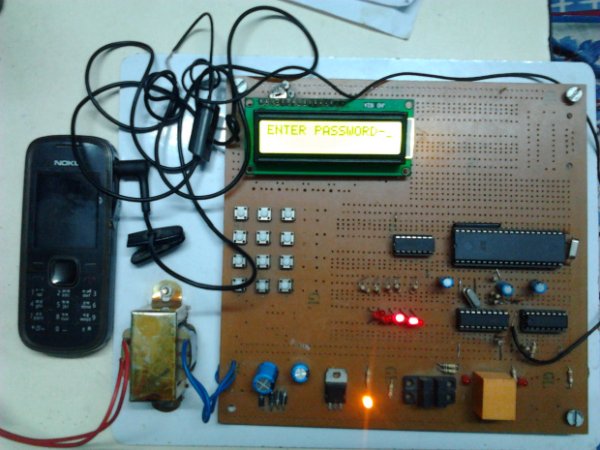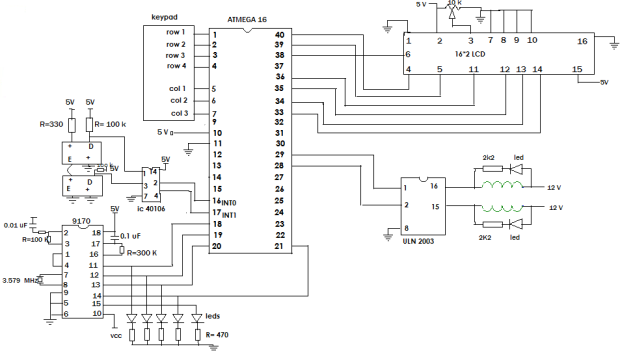- INTRODUCTION: A lot of electricity is wasted due to ignorance or fault of the user. Sometimes a person in the room turns on all the electric equipments which is of no use to them. As an example, supposedly a person enters in the hall or conference hall (where a large number of tube lights or fans are available). In the default scenario, all the equipments would be turned on which is just wastage of electricity or what if the number of people is not up to the capacity of the hall and the whole lot of equipment is being fed unnecessarily by the current. Also what if all the people went out leaving the switches on, consuming the energy until any one sees and turns them off.
- PROJECT DESCRIPTION:
In this project what I have done is the:
- Counting the no. of persons present in the room and providing automation according to the number of people present inside.
- Providing a remote control (DTMF) to the people inside which will allow them to choose which set of equipments to turn on for their comfortability.
Two Opto-Sensors have been used to sense the entry or exit of the people inside the hall.
Here, we have provided a password control for the authorized entry of the persons inside the room. In case the wrong password is provided, the lcd displays an “UNAUTHORIZED ENTRY” to the gatekeeper (an alarm can be triggered), who will take the necessary actions.
Once the authorized entry is made, the counter starts counting the number of people going inside the room. The moment the count starts from one – first row lights and fans are turned on. This row is turned on until the count reaches 4. (This number is in accordance to the no of seats in the first row).
When the count increases from 4 to 5, second row lights and fans are switched on. Similarly at 9, third row is on.
In a similar fashion, the count decreases also and the count if decreases to 8, the third row is turned off. If it becomes zero then all the switches are turned off. Thus automation takes place according to the no of persons.
DTMF control is provided for the persons willing to change their seats according to their comfort. The lights can be controlled by the mobile. 
Keypad numbers Actions
> 1 Row1 lights on
> 2 Row1 lights off
> 3 Row2 lights on
> 4 Row2 lights off
> 5 Row3 lights on
> 6 Row3 lights off
- COMPONENTS USED:
- DTMF module:- IC 9170, crystal-3.579 MHz, Capacitor- 0.01 uF, Resistors-100K, 300K, 470, leds
- opto sensors module: optosensors, Resistance-330, 100K, IC 40106
- Relay module- IC uln 2003, 12V supply, Resistance-2K2, leds
- lcd with shown connections
- Kepad of 13 push-buttons
- Atmega 16 with the connections shown in figure.
- CIRCUIT DIAGRAM:
circuit showing the connections of various components with the ATMEGA16 NOW COMES THE IMPORTANT PART…- Interfacing of various modules with atmega16:
- DTMF module interfacing:
Dtmf ic 9170 is used to decode the dtmf signals coming from the mobile. The mobile is connected via an earphone, whose positive end is connected to pin 2 of 9170 through capacitor. The capacitor just filters out the unwanted dc components. Refer to its datasheet for its working.The output of this decoder is obtained at pins 11-15 in the corresponding binary form.
For more detail: An advanced energy saver project with DTMF capabilities to use electricity efficiently by reducing the unwanted uses.


